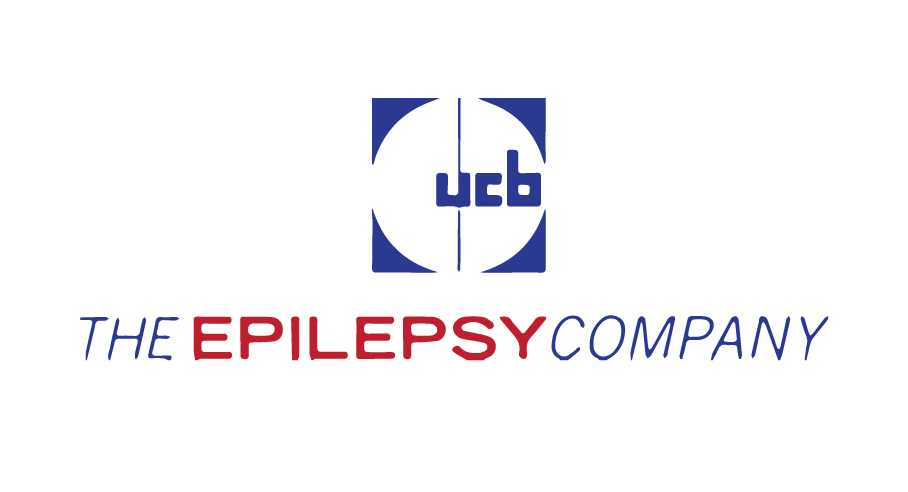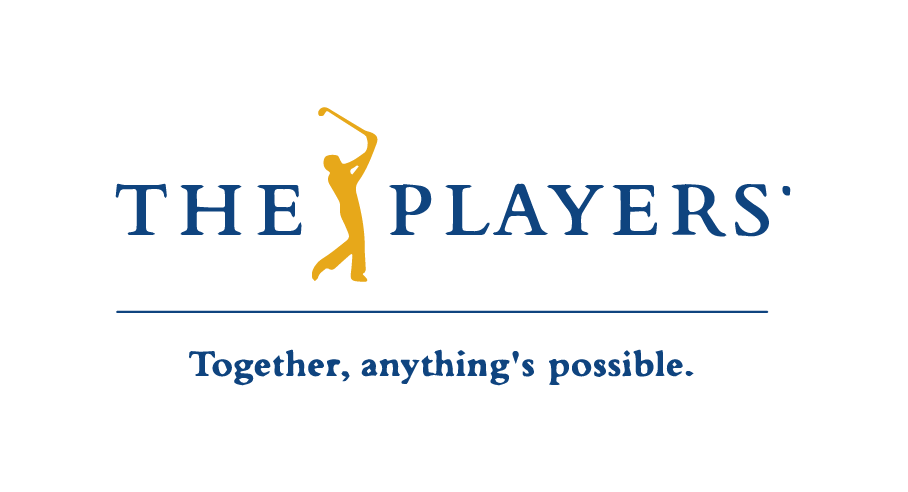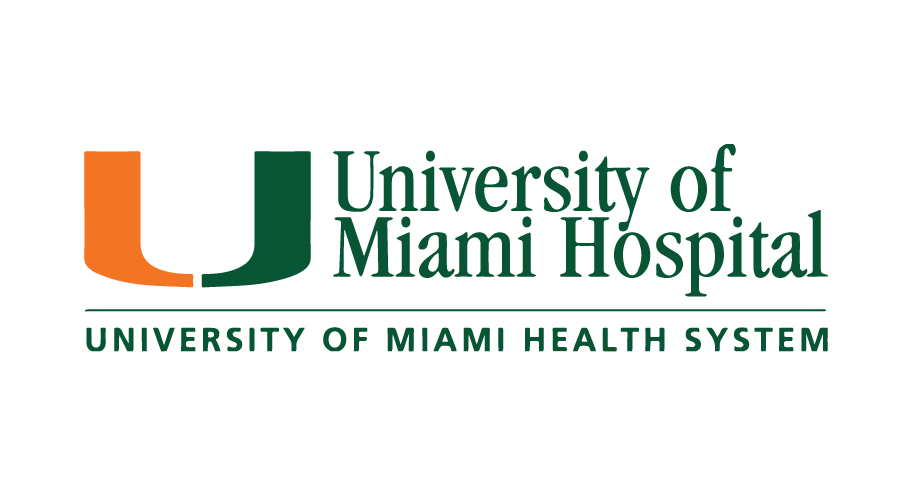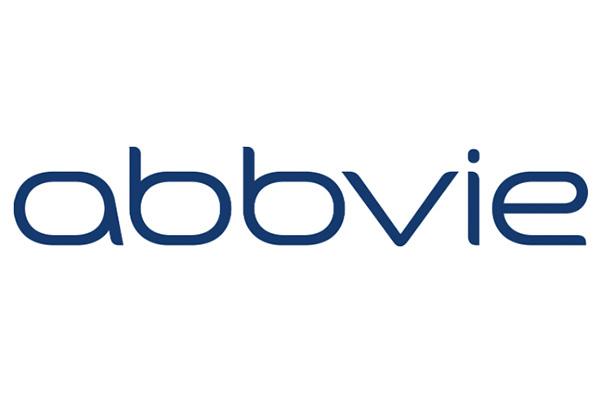ID BRACELETS
Medical Alert Devices
Bracelets or necklaces that at a push of a button or if set for fall detection, alerts emergency personnel and caregivers of need for assistance.
Medical Alert ID Bracelets
A variety of bracelets are available with USBs built in or with an ID and PIN enabling access to personal health information such as medical condition, allergies, medications, contacts, etc. on a designated website. For example: www.endevr.com with subscriptions as low as $9.95 per month and the bracelets range from $19.95 to $29.95.
MOVEMENT DETECTOR
PulseGuard
Developed by parents of a child with Dravet Syndrome, PulseGuard consists of a watch-like strap that monitors heart rate. Heart rate is a vital sign that is often elevated during certain types of seizures. The sensor is programmed to set off an alarm with pre-established high and low heart rate parameters. The data is transmitted wirelessly to a PulseGuard app that may be downloaded to an iPad. The sensor has a battery life of 9 hours. The PulseGuard Prime System costs £725.00 (euros) which equals $789.22 and there are a variety of accessories available as well on the website. www.pulseguard.org
EP Detect Application
Developed by parents of a child with Dravet Syndrome, PulseGuard consists of a watch-like strap that monitors heart rate. Heart rate is a vital sign that is often elevated during certain types of seizures. The sensor is programmed to set off an alarm withTransforms Android and Windows mobile cell phones, with motion detection and GPS position location, into an epilepsy monitor that alerts caregivers when abnormal movements are detected like the shaking of a tonic-clinic seizure. Emergency text messages may be sent to up to 3 caregivers. An alert voice message may be recorded so that it plays during the event and alerts those around the event that the person is having an epileptic seizure. There also is a 1-60 second cancel feature enabling the wearer to stop the sending of alert text and phone messages. www.epdetect.com pre-established high and low heart rate parameters. The data is transmitted wirelessly to a PulseGuard app that may be downloaded to an iPad. The sensor has a battery life of 9 hours. The PulseGuard Prime System costs £725.00 (euros) which equals $789.22 and there are a variety of accessories available as well on the website. www.pulseguard.org
Smart Watch
This is a wrist watch which monitors repetitive shaking motion and then alerts the individual’s caregiver(s) through their Android device. The watch also includes a push button which transmits a pre-programmed text and/or voice message requesting help. The alerts include date, time, location, and duration of the event. There are Silver and Gold subscription options. The Silver plan has a one-time activation fee of $149.00 plus a monthly fee of $19.99 which includes motion detection, alerts, get help button, recordings of the event, and the alarm. The Gold plan has an activation fee of $199.99 and monthly subscription fee of $29.99 and it adds GPS location, multiple contacts, and medication reminders. www.smart-monitor.com
TREATMENTS FOR TEODAY
Deep Brain Stimulation (DBS)
Electrodes are implanted in deep parts of the brain thought to be the seizure foci and they provide direct electrical stimulation in order to abort or diminish the severity of a seizure. DBS is also used to treat Parkinson’s disease, anorexia, and some sleep disorders.
Responsive Neurostimulation (RNS)
Subdural strips or depth electrodes are placed near the seizure focus and discharge when epileptiform activity is detected by the RNS device. Studies have shown that 2/3 of people using the RNS System (66%) had their seizures cut in half after 7 years of using it. RNS was approved in 2013 in the U.S.
Transcutaneous Vagus Nerve Stimulation (t-VNS)
The vagus nerve has a branch that passes by the ear, the auricular branch, and electrical impulses may be sent transcutaneously to stimulate this nerve’s inhibitory effects. This vagus nerve branch travels to the brainstem. The t-VNS or NEMOS consists of an ear electrode and a stimulation unit. The ear electrode is like a hearing aid and the stimulation unit appears like a cell phone. The treatment is carried out by the patient via 3-4 daily sessions lasting at least one hour each. The device may not be effective until a few weeks from its initial use. www.cerbomed.com
Vagus Nerve Stimulator (VNS)
Approved in the US in 1997, the VNS is a device placed in the chest with electrodes attached to the left vagus nerve in the neck which stimulate this neuroinhibitory nerve when electrical impulses are detected at neurologist set frequencies. The device may also be activated when a magnet is placed over the area in the chest where the device was implanted. http://us.cyberonics.com
MEDICAL MARIJUANA
Epilepsy and Medical Cannabis
Article and Information courtesy of the Epilepsy Foundation of America. Visit their website to learn more.
The Epilepsy Foundation is committed to supporting physician directed care, and to exploring and advocating for all potential treatment options for epilepsy, including cannabidiol (CBD) oil and medical cannabis. People with uncontrolled seizures live with the continual risk of serious injuries and loss of life. If a patient and their healthcare professionals feel that the potential benefits of medical cannabis for uncontrolled epilepsy outweigh the risks, then families need to have that legal option. Nothing should stand in the way of patients gaining access to this potentially lifesaving treatment.
The Epilepsy Foundation supports legislation that would allow people living with epilepsy and uncontrolled seizures to gain access to this promising treatment option. In states where medical use of cannabis is legal as a treatment for epilepsy, a number of people living with epilepsy report beneficial effects, including a decrease in seizure activity, when using a cannabis strain rich in cannabidiol, a non-euphoric component of cannabis.
Not everyone with epilepsy should or would consider medical cannabis as a treatment option, and further research is needed on the connection between cannabis and seizures. But medical cannabis, when recommended by a treating physician, may be the best alternative for some individuals living with drug resistant epilepsy and uncontrolled seizures.
Research and Data
Further research is needed on the connection between cannabis and seizures. Unfortunately, it is difficult for scientists and researchers to organize clinical trials because cannabis is a Schedule I substance, and only the National Institute for Drug Abuse (NIDA) can cultivate cannabis for medical research. The Epilepsy Foundation supports policy proposals that would remove bureaucratic barriers to research on the connection between seizures and cannabis. Below we have compiled some of articles on medical cannabis research and data.
Research
- Hill, T.D.M, et al. Cannabidivarin-rich cannabis extracts are anticonvulsant in mouse and rat via a CB1 receptor-independent mechanism. British Journal of Pharmacology. 170(3): 679-692 (2013).
- Maa, E. & Figi, P. The case for medical marijuana in epilepsy. Epilepsia (2014).
- Cilio, M. R., et al. The case for assessing cannabidiol in epilepsy. Epilepsia (2014).
- Mathern, G, et al. From the Editors: Cannabidiol and medical marijuana for the treatment of epilepsy. Epilepsia (2014).
- Devinsky, O., et al. Cannabidiol: Pharmacology and potential therapeutic role in epilepsy and other neuropsychiatric disorders. Epilepsia (2014).
- Institute of Medicine. Marijuana and Medicine: Assessing the Science Base. Washington, DC: The National Academies Press (1999).
- Gloss, D, & Vickrey, B. Cannabinoids for epilepsy. Cochrane Database of Systematic Reviews. 3 (2014).
- Collins, Th. Special Report: What Neurologists are Doing about Medical Marijuana. Neurology Today,14(8): 1,28-33 (2014).
- Hurley, D. In ‘Grass Roots’ Movement, Many MS and Epilepsy Patients are Using Marijuana. Neurology Today, 4(7): 34-35 (2004).
- Samson, K. AAN Systematic Review: How Effective and Safe Is Medical Marijuana for Different Neurologic Disorders?. Neurology Today,14(9): 1, 12-13 (2014).
- Fallik, D. As Another State Approves Medical Marijuana, Neurologists Urge Caution About Prescribing. Neurology Today, 10(4): 1, 5-7(2010).
- Jacobson, K. & Porter, B. Report of a parent survey of cannabidiol-enriched cannabis use in pediatric treatment-resistant epilepsy. Epilepsy and Behavior. 29(3): 574-577 (2013).
The Epilepsy Foundation supports policy proposals that would remove bureaucratic barriers to research on the connection between seizures and cannabis. Below we have compiled some of articles on medical cannabis research and data. Research Hill, T.D.M, et al. Cannabidivarin-rich cannabis extracts are anticonvulsant in mouse and rat via a CB1 receptor-independent mechanism. British Journal of Pharmacology. 170(3): 679-692 (2013). Maa, E. & Figi, P. The case for medical marijuana in epilepsy. Epilepsia (2014). Cilio, M. R., et al. The case for assessing cannabidiol in epilepsy. Epilepsia (2014). Mathern, G, et al. From the Editors: Cannabidiol and medical marijuana for the treatment of epilepsy. Epilepsia (2014). Devinsky, O., et al. Cannabidiol: Pharmacology and potential therapeutic role in epilepsy and other neuropsychiatric disorders. Epilepsia (2014). Institute of Medicine. Marijuana and Medicine: Assessing the Science Base. Washington, DC: The National Academies Press (1999). Gloss, D, & Vickrey, B. Cannabinoids for epilepsy. Cochrane Database of Systematic Reviews. 3 (2014). Collins, Th. Special Report: What Neurologists are Doing about Medical Marijuana. Neurology Today, 14(8): 1,28-33 (2014). Hurley, D. In ‘Grass Roots’ Movement, Many MS and Epilepsy Patients are Using Marijuana. Neurology Today, 4(7): 34-35 (2004). Samson, K. AAN Systematic Review: How Effective and Safe Is Medical Marijuana for Different Neurologic Disorders?. Neurology Today,14(9): 1, 12-13 (2014). Fallik, D. As Another State Approves Medical Marijuana, Neurologists Urge Caution About Prescribing. Neurology Today, 10(4): 1, 5-7(2010). Jacobson, K. & Porter, B. Report of a parent survey of cannabidiol-enriched cannabis use in pediatric treatment-resistant epilepsy. Epilepsy and Behavior. 29(3): 574-577 (2013).
FAQ's
Does cannabis help seizures?
Evidence from laboratory studies, anecdotal reports, and a small clinical study from a number of years ago suggests that cannabidiol, a non-psychoactive component of cannabis, could potentially be helpful in controlling seizures. However, there are conflicting reports in the literature. So far, no clear, definitive, solid evidence exists to show cannabis helps seizures.
Does cannabis have side effects?
It is difficult to assess the adverse effects of the drug since there is no controlled amount of the medication that has been studied. Therefore, other side effects could occur that are simply not known yet to practicing physicians. Cannabis has a number of effects depending on how it is ingested:
If smoked, the risk factors associated with smoking apply to cannabis. If one takes cannabis preparations that are not smoked, side effects are similar to ones that would be seen with inhaled varieties of the drug. These include appetite stimulation and memory problems. It is unknown what the long-term side effects are for low or different versions of cannabis, or those that seek to eliminate the psychotropic effects.
Should one pursue medical cannabis if all other medications do not work?
The goal of epilepsy treatment is to stop seizures with minimal or no side effects. There are receptors in the brain for cannabis, otherwise known as cannabinoid receptors, in areas that are commonly known to cause seizures (such as the hippocampus and amygdala). There is very little understanding as to what roles these receptors play in seizures. Given the legal issues, the lack of clarity on side effects, and risks associated with the use of the medication, there are better options one could try for epilepsy before resorting to cannabis.
Is medical cannabis safe?
To date, there is very little to no monitoring of cannabis. Therefore, the risk is unknown. Since medical cannabis is now legal in many states, some suppliers are working to develop dependable branded products, even mixes carefully controlled to offer specific percentages of THC or CBD. However, there are no standards or treatment recommendations that can be used to determine the best product. In addition, there are unknown consumer safety protections for these products. They are not regulated like prescription drugs for safety and efficacy by the Food & Drug Administration. There are many issues to be concerned with if using a product legally within your state including, but not limited to, the safety and product monitoring of the grower’s operation, pesticides , and privacy issues.
The Food and Drug Administration (FDA) has issued several warning letters to companies that have inappropriately marketed products containing cannabidiol (CBD). Many of these companies have misrepresented the current science on CBD and all of the products contain little to no CBD. You can view the list of companies that were issued warnings at http://www.fda.gov/NewsEvents/PublicHealthFocus/ucm435591.htm.
What medical cannabis research is currently being done?
The Epilepsy Foundation is currently sponsoring a clinical trial for cannabis at New York University. More research must be done on the connection between medical cannabis and epilepsy.
The Controlled Substances Act currently lists cannabis as a Schedule I drug. According to the Drug Enforcement Administration (DEA), cannabis has a high potential for abuse and has no currently accepted medical use in the United States. Cannabis’s classification as a Schedule I drug adds considerable complexity, expense, and potential access problems for clinical research.
Fact Sheets
The Florida Department of Health Office of Compassionate Use has provided some great resources:
Additional Informational Resources
http://www.floridahealth.gov/programs-and-services/office-of-compassionate-use/resources/index.html
SLEEP MONITORS
Emfit Monitor
The Emfit Movement Monitor is an under-the-bed device ideal for monitoring and detecting abnormal movements such as muscle spasms associated with a sleeping person. The Movement Monitor detects when a person has continuous faster movements over a pre-set amount of time and then triggers a notification. The system also notices light movements, thus making it equally suitable for small children.
MP5 Tonic/Clonic Seizure Detector
Uses a movement sensor which is placed under the patient’s mattress around the shoulder level. The sensor sensitivity is set so that routine night time movements do not lead to false alarms. Furthermore, there is a 2-20 seconds delay feature that is also set by the caregiver(s) so that if routine bed movements resume it alerts the sensor and the alarm is not set off. There are several models and accessories. The MP5 basic price is £205.00 = $225.35 with a VAT (value added tax) of £246.00 = $270.41. There is an exemption form for US consumers so that the VAT is later reimbursed. http://www.easylinkuk.co.uk/
SAMi Sleep Activity Monitor
Provides an array of video monitor options which are programmed via an iOS device (iPhone, iPad, iTouch, iPod). The app is programmed by the caregivers so that pre-established parameters of abnormal movements that may occur throughout the night result in setting off an alarm plus video and audio recording of the event. The camera is mounted so that the bed is clearly displayed on the iOS device. The device is then portable with the caregiver so that an alarm will alert immediate video and audio viewing and attention to the person with epilepsy as needed. The SAMi camera is $399.00, Standard Kit which includes a 16 GB iPod 5, camera, software pre-installed for $899.00, and JB Edition Standard Kit which is an upgrade of the Standard Kit in that a 32 GB iPod 5 is included for $949.00. www.samialert.com
STILL IN DEVELOPMENT
Inner-Ear EEG Device
An EEG device that is worn inside the ear, much like a hearing aid, with acoustic vents to enable hearing while the EEG is being recorded. The device has three electrodes recording data within the ear canal. It can record for several days at a time but is limited in that it only records from the temporal region of the brain given its placement. However, by being inside the ear, body movements will not disturb the recording and the electrodes are reliably placed in the same location for repeated studies. Epileptiform foci are often in the temporal region making this device extremely useful to the neurologist.
Bio-Nano-Chips
Researches are working to develop a hand-held device about the size of a credit card that will measure antiepileptic drug levels in a person’s saliva. The BNCs are being tested versus blood tests for Dilantin and Phenobarbital levels. BNCs provide a noninvasive alternative to blood tests that may be more cost effective and provide the patient and their neurologist with immediate information enabling medication dosage changes more effectively.
Electromyographic (EMG) Detector
Electrodes are attached to the biceps and triceps and constantly monitor the electrical activity of the arm. A baseline electrical activity is set for the individual and the device is programmed to trigger an alarm as the muscles’ electrical activities change. In studies, the device has been found to consistently detect generalized tonic-clonic seizure activity 30 seconds before full seizure activity was noted to occur on the video EEG monitor. The EMG detector also sends its signals to a base station enabling the contact of appropriate personnel.
Seizure Prediction Devices
Prediction by EEG monitoring is currently being studied and early results indicate that EEG changes are detectable approximately 90 minutes before the seizure occurs. Companies such as NeuroVista are detecting seizures via implanted electrodes mostly in the temporal region of the brain in patients with temporal lobe epilepsy or in other sites as well depending on the seizure onset region. The electrodes are then connected to a device in the chest which transmits the EEG to a belt-worn device. The device lights up white indicating low probability of an impending seizure, blue for moderate probability, and red for a high probability. Seizure prediction is only useful if there are treatment options to abort the event or at least alert the individual to go to a safer and perhaps more private site. Once the predictive value of the EEG monitors is improved, therapeutic devices may be incorporated to stimulate the vagus nerve, apply anti-seizure drugs to the specified region of the brain, or engage in brain cooling.
TREATMENTS FOR TOMORROWS
Legal Drug Perfusion
Once epileptiform discharges are detectable, a catheter placed in the area responsible for the onset of the seizure would deliver neuroinhibitory medication at the site. Another alternative is medication delivery to the ventricles referred to as Introcerebroventricular Infusion or ICVRx. Local delivery of medication or ventricular delivery would diminish systemic side effects given the dosage of the medication would be reduced and when seizure activity is detected, it can be aborted immediately with the infusion. Research is currently underway to determine the ideal neuroinhibitory agent.
Focal Brain Cooling
First proposed approximately 50 years ago as a method to suppress epileptic discharges via the reduction of neurotransmitter release, alternation of the activation and inactivation kinetics of the voltage-gated ion channels, and slowing of catabolic processes. 2 devices are currently being researched: 1 Use of a thermoelectric (Peltier) chip and 2 Use of a plate. The plate has 2 inner water channels and is connected to a component pump that keeps circulated water at a target temperature alongside electrocorticography electrodes (ECoG). The goal temperature of the devices is 15° – 20° Celsius.
Optogenetics
Is a technique in which neuronal firing is controlled by specific color lights in neurons that have been genetically transformed to be sensitive to the light. A blue light is excitatory and a yellow-orange light is inhibitory. This technique is being studied so that early seizure detection enables abortion of the event through the activation of the yellow-orange light which inhibits neuronal firing.
Transcranial Magnetic Brain Stimulation
This therapeutic approach has been found to have limited efficacy except in a subset of patients, those with cortical dysplasia. It involves stimulation with electrodes to the scalp which can be painful or via Transcutaneous Magnetic Stimulation (TMS) which is better tolerated. Studies are currently underway to help determine if targeted TMS, placed over the seizure focus, results in improved seizure reduction.



































